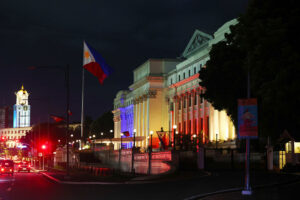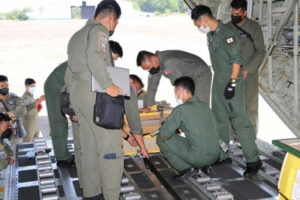Philippine competitiveness

“Does competitiveness matter?”
That was the opening question of the moderator of the forum on “2023 World Competitiveness Yearbook Philippine Results.” It might seem to be a throwaway question. The panelists might have thought that the answer was a no-brainer.
Jamil P. Francisco, Asian Institute of Management (AIM) associate professor, intended it to be a trick question. Indeed, the moderator’s opening question led to a stimulating discussion.
Ser Percival Peña-Reyes, director of the Ateneo Center for Economic Research and Development, emphasized that competitiveness is essentially about productivity. Productivity should frame the discussion about national competitiveness.
The tendency of many is to reduce competitiveness to attracting foreign capital, increasing exports and global market share, luring foreign tourists, and comparing the Philippines to the rest of the world in terms of economic performance. To be sure, productivity underpins all this. But productivity has a broader meaning, beyond making the Philippines compete with other countries.
Productivity thus is principally about Adam Smith’s “nature and causes of the wealth of nations.” The forum on world competitiveness, without saying so, became an inquiry into the nature and causes of Philippine growth and wealth.
A word about the World Competitiveness Yearbook (WCY). The WCY describes itself as “a comprehensive annual report and worldwide reference point on the competitiveness of countries.” It shows trends and creates benchmarks, drawn from statistics and surveys.
Something to ponder over WCY: What is more important for us? How we improve our relative ranking vis-à-vis the rest of the world? Or how we achieve our medium-term goals and grow the economy and human development, irrespective of our ranking?
I am not exactly a fan of global rankings and indices as a concrete guide to national policymaking. Let’s take the WCY. It contains a lot of information and many variables. The information overload can only confound a policymaker or investor. All in all, the 2023 WCY has 336 criteria! They fall under four categories, namely economic performance, government efficiency, business efficiency, and infrastructure. Each general category has sub-sections containing a set of indicators.
Such a comprehensive but dizzying report does not offer the specific insights into how the Philippines can sustain its growth. One must still determine which criteria, and they cannot be many, are the weightiest at a particular time.
The 2023 WCY identifies many strengths and weaknesses for the Philippines, based on the scores and ranking. The task is to identify a narrow set of critical variables — those that really matter — at a conjuncture.
To illustrate, the 2023 WCY indicates a big improvement in the country’s “university education index.” Nice, but is this the index that is decisive at this stage for growth momentum? Or the 2023 WCY states that access to financial services based on gender ratio has suffered a decline. Not nice, but does this index currently represent a big bottleneck to productivity?
On a positive note, the 2023 WCY provides comprehensive information that the decision maker can use in doing the diagnostics. And that was what the AIM forum did: Use the 2023 WCY as a takeoff to discuss the “key challenges faced by the Philippines.”
And the forum was successful in steering the discussion towards the identification of the key issues. As pointed out by Ernesto Perez, director-general of the Anti-Red Tape Authority, the main concern is to attract or generate private investments. In this regard, Christopher Caboverde of the AIM’s Policy Center for Competitiveness provided a neat summary of the main challenges.
Drawing from the 2023 WCY and from the studies of the World Bank, the International Monetary Fund, and the Asian Development Bank, inter alia, Mr. Caboverde enumerated the main issues. To wit: high inflation, fragile fiscal position and revenue enhancement, cheap access to food, climate change vulnerability and transition to clean energy, weak social protection (particularly about universal healthcare), and poor performance in elementary education.
To be sure, the above still says a lot. But this exemplifies the practical approach of doing the diagnostics towards identifying the binding constraints on investments, productivity, or competitiveness.
Filomeno S. Sta. Ana III coordinates the Action for Economic Reforms.




